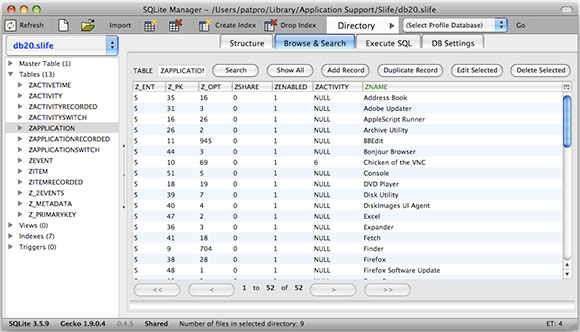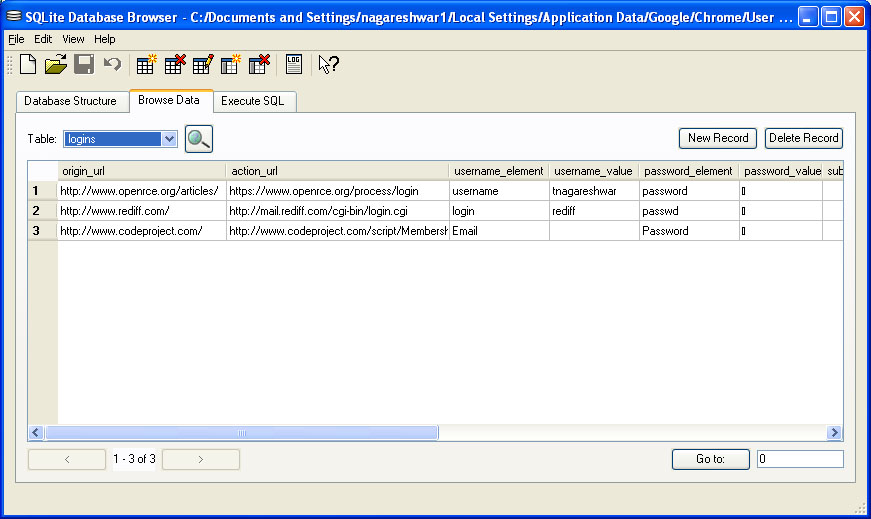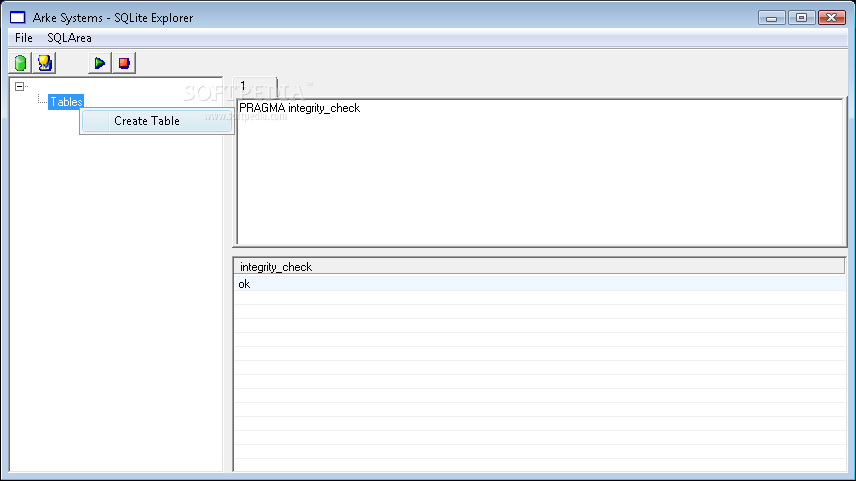

- SQLITE MANAGER CHROME HOW TO
- SQLITE MANAGER CHROME INSTALL
- SQLITE MANAGER CHROME CODE
- SQLITE MANAGER CHROME PASSWORD

There is also "Cookies", "Media History", "Preferences", "QuotaManager", "Reporting and NEL", "Shortcuts", "Top Sites" and "Web Data".

If you want to extract Chrome cookies, this tutorial walks you through extracting and decrypting Chrome cookies in a similar way.įor example, there is "History" file that has all the visited URLs and keyword searches with a bunch of other metadata. I invite you to explore that directory furthermore. Note that in this tutorial, we have only talked about "Login Data" file, which contains the login credentials.
SQLITE MANAGER CHROME HOW TO
In this tutorial, you learned how to write a Python script to extract Chrome passwords on Windows, as well as delete them to prevent malicious users from being able to access them. Run the first script as well, and you'll notice it outputs nothing, so we have successfully protected ourselves from this! Conclusion Once you open Chrome this time, you'll notice that auto-complete on login forms is not there anymore. Here is my output: Deleting a total of 204 logins. This will require you to close the Chrome browser and then run it. # as the database will be locked if chrome is currently runningĬursor.execute("select origin_url, action_url, username_value, password_value, date_created, date_last_used from logins order by date_created") "Google", "Chrome", "User Data", "default", "Login Data")
SQLITE MANAGER CHROME PASSWORD
Get_encryption_key() function extracts and decodes the AES key that was used to encrypt the passwords that are stored in the "%USERPROFILE%\AppData\Local\Google\Chrome\User Data\Local State" path as a JSON file.ĭecrypt_password() takes the encrypted password and the AES key as arguments and returns a decrypted version of the password.ĭb_path = os.path.join(os.environ, "AppData", "Local", Get_chrome_datetime() function is responsible for converting chrome date format into a human-readable date-time format. Get: Build 24 Ethical Hacking Scripts & Tools with Python EBook Return str(win32crypt.CryptUnprotectData(password, None, None, None, 0)) Return win32crypt.CryptUnprotectData(key, None, None, None, 0) # using a session key derived from current user's logon credentials # return decrypted key that was originally encrypted With open(local_state_path, "r", encoding="utf-8") as f: Local_state_path = os.path.join(os.environ, Return datetime(1601, 1, 1) + timedelta(microseconds=chromedate) Since `chromedate` is formatted as the number of microseconds since January, 1601""" """Return a `datetime.datetime` object from a chrome format datetime Open up a new Python file, and import the necessary modules: import osįrom datetime import timezone, datetime, timedeltaīefore going straight into extracting chrome passwords, we need to define some useful functions that will help us in the main function: def get_chrome_datetime(chromedate):
SQLITE MANAGER CHROME INSTALL
To get started, let's install the required libraries: pip3 install pycryptodome pypiwin32 Related: Build 24 Ethical Hacking Scripts & Tools with Python EBook We will also make a quick script to protect ourselves from such attacks.
SQLITE MANAGER CHROME CODE
Since Chrome saves a lot of your browsing data locally on your disk, In this tutorial, we will write Python code to extract saved passwords in Chrome on your Windows machine. However, this can be time-consuming when doing it manually. Extracting saved passwords in the most popular browser is a useful and handy forensic task, as Chrome saves passwords locally in an SQLite database.


 0 kommentar(er)
0 kommentar(er)
